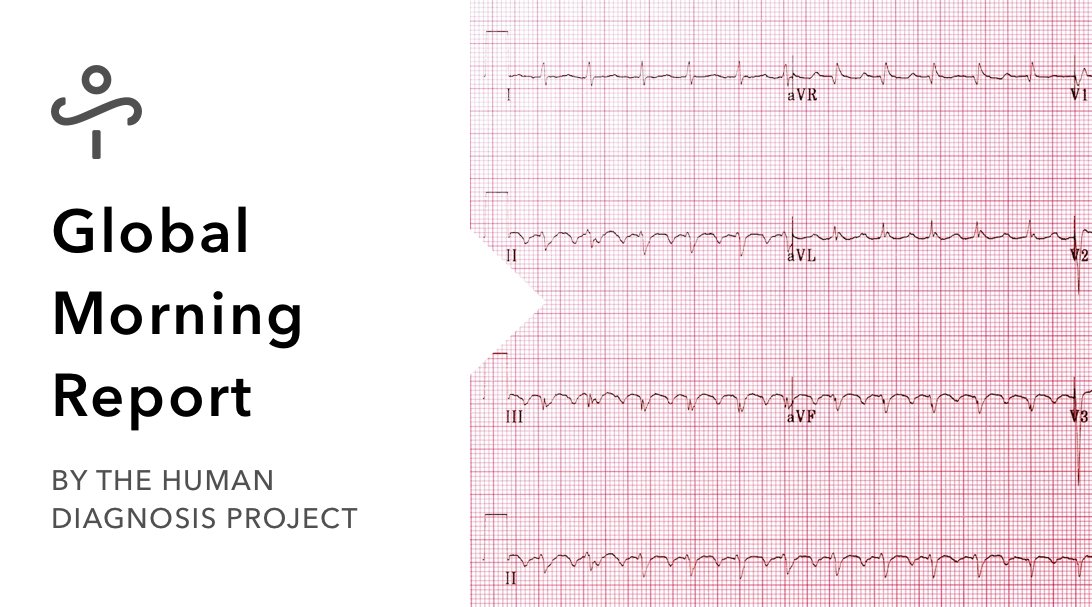Last Updated on February 13, 2019 by Laura Turner
Click through each section to learn more about the case and refine your differential diagnosis.
A 28-year-old woman with metastatic breast cancer (bone and brain) was admitted to the hospital with dyspnea. On admission to the hospital, she was mentating normally. However, due to concerns about her respiratory status she was not permitted to eat or drink overnight. The following morning her respiratory status was unchanged but she was slow to respond to questions.
Your Assessment
Which of the following is the most likely diagnosis?
A. Infection
B. Increased intracranial pressure
C. Hypercapnia
D. Electrolyte abnormality
E. Seizure
[spoiler title=”Additional Clinical Information Part – 1″] Upon evaluation, her physical exam was notable for mild tachypnea, other vital signs were within normal limits and she had otherwise unremarkable heart and lung exams. On neurologic exam, she was alert and oriented x3, able to follow commands, but answering questions slowly. There were no focal neurologic deficits.
Your Assessment
Which of the following is the most likely diagnosis?
A. Infection
B. Increased intracranial pressure
C. Hypercapnia
D. Electrolyte abnormality
E. Seizure [/spoiler]
[spoiler title=”Additional Clinical Information – Part 2″]You look in the patient’s medical record and notice she had 7 liters of urine output overnight. You also note her basic metabolic panel on admission (Na 136, K 4.2, Cl 102, Bicarb 24, BUN 17, Cr 0.7) and her BMP this morning after fasting (Na 144, K 4.1, Cl 105, Bicarb 25, BUN 20, Cr 0.9).
Your Assessment
Which of the following is the most likely diagnosis?
A. Hypercapnia
B. Diabetes insipidus
C. Hyperaldosteronism
D. Normal response to fasting
E. Excess salt intake[/spoiler]
[spoiler title=”Additional Clinical Information Part – 3″]Upon evaluation of her rapid change in serum sodium, you obtain: Serum Osm 288 mOsms/kg (275-295 mOsm/kg), Urine Osm 78 (500-800 mOsm/kg), Urine Na 20 mEq/L, Specific Gravity 1.006. Her urine Osms increase with administration of desmopressin.
Your Final Assessment
A. Normal response to fasting
B. Central diabetes insipidus
C. Nephrogenic diabetes insipidus
D. Hyperaldosteronism
E. Excess salt intake[/spoiler]
[spoiler title=”Click for the Correct Answer”]The Human Dx medical community concluded answer B: Central diabetes insipidus. Solve more cases by signing up for Human Dx here.[/spoiler]
[spoiler title=”Teaching Points”]Case Resolution: Given the patient’s known history of CNS metastases, the team was concerned about central diabetes insipidus. She was given DDAVP and her urine osmolality rose appropriately. She was ultimately discharged on a regimen of DDAVP, which helped improve her polydipsia. Her sodium normalized with treatment. Her dyspnea (presenting symptom) resolved on its own and an underlying etiology was not discovered.
Presentation: Central diabetes insipidus (DI) is characterized by the underproduction of antidiuretic hormone (ADH). Causes include pituitary gland damage during surgery, pituitary metastases, or idiopathic. Patients will report polyuria and polydipsia.
Diagnosis: Diagnosis of central DI is made with utilization of a water restriction test and DDAVP administration. In patients without DI, water restriction should cause a rise in urine osmolality. In DI, the urine osmolality will remain stable despite water restriction. The administration of DDAVP (an ADH analogue) will allow for free water reabsorption by the kidneys and cause the urine osmolality to increase in patients with central DI, thereby helping to make the diagnosis.
Treatment: Patients are typically treated with ADH replacement in the form of DDAVP.
Clinical pearl: Patients with central DI are typically able to self-regulate their sodium with polydipsia and the diagnosis is oftentimes unmasked when a patient no longer has access to water (NPO status, travel). It is essential to get history regarding polydipsia and polyuria when concerned about DI.
Clinical pearl: Central DI can be differentiated from nephrogenic DI by ADH levels and response to DDAVP. Patients with central DI should have low serum ADH levels and concentrate their urine with DDAVP administration. Nephrogenic DI patients will typically have elevated serum ADH levels and urine will stay dilute despite DDAVP administration.
References: Horm Res Paediatr. 2012;77(2):69-84. doi: 10.1159/000336333
[/spoiler]
About Global Morning Report
Global Morning Report (GMR) is a daily series of fun, interactive, and brief clinical cases for physicians and trainees to practice their clinical reasoning in just a few minutes each day. GMR is a medical education initiative from the Human Diagnosis Project.

